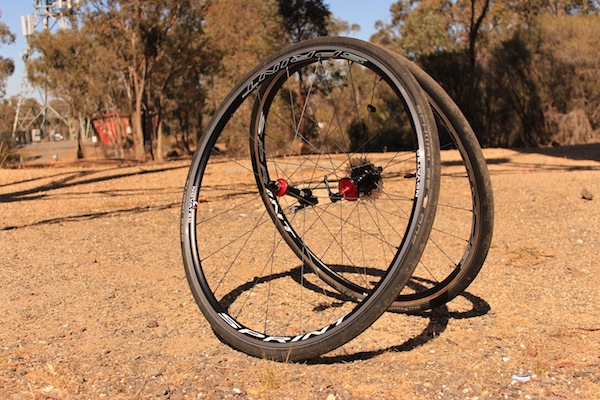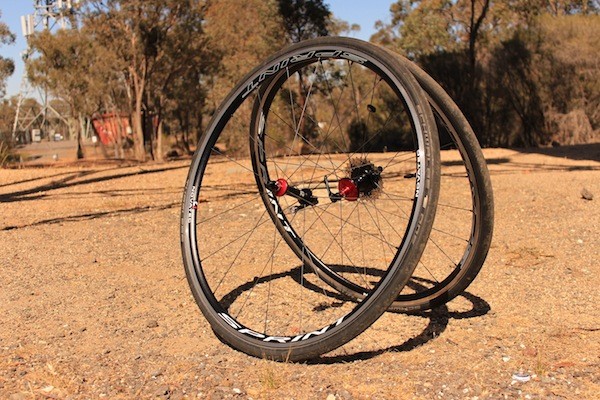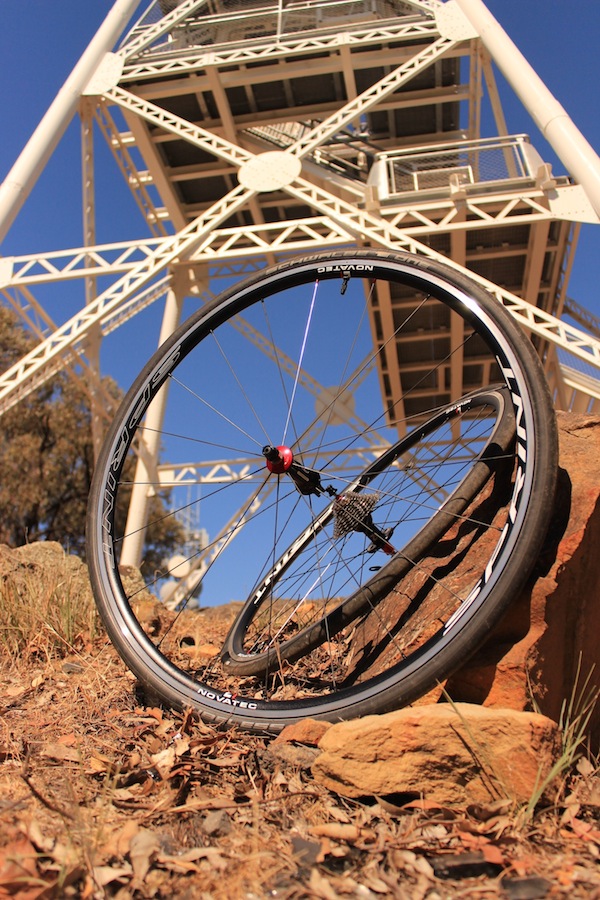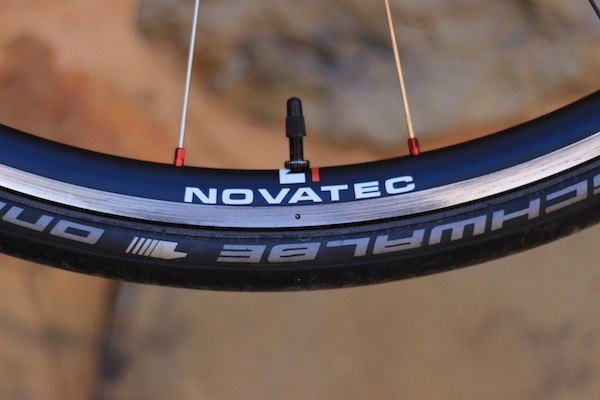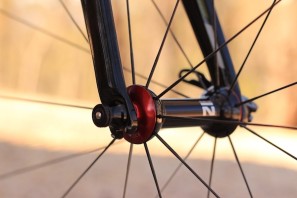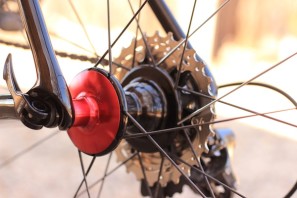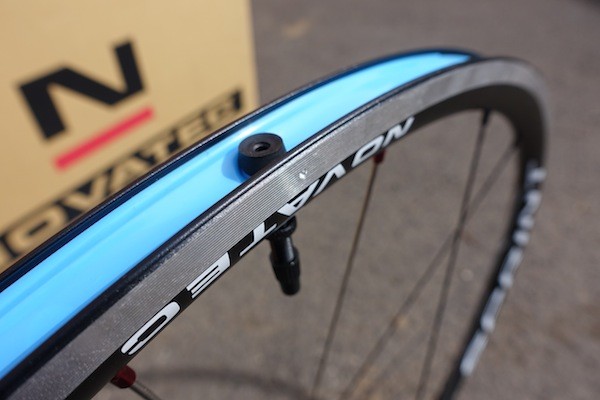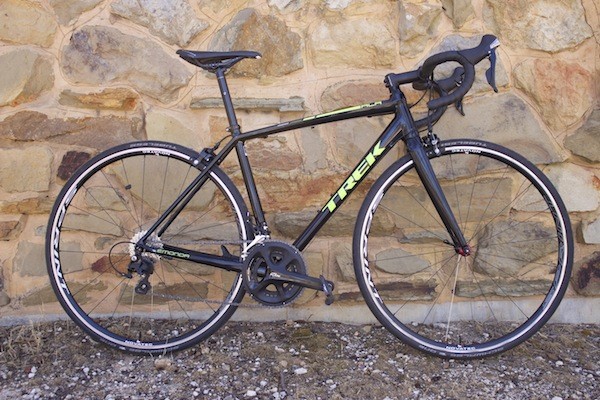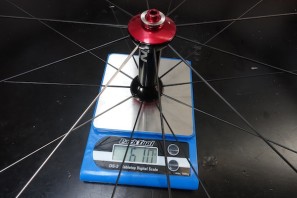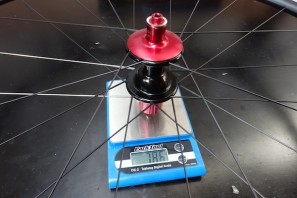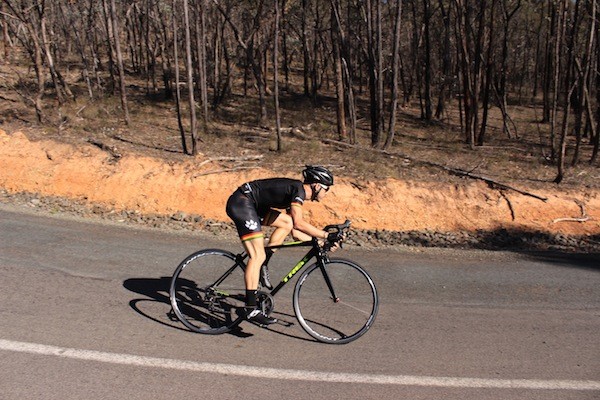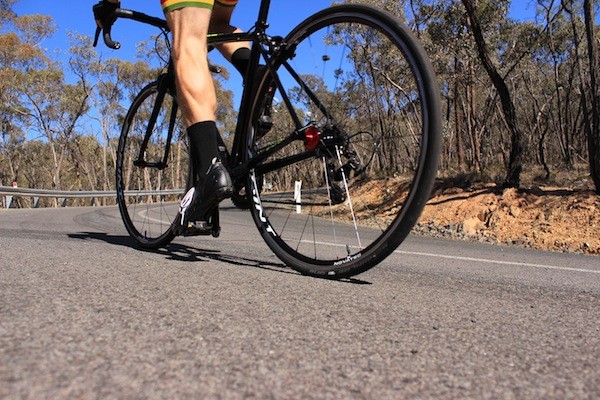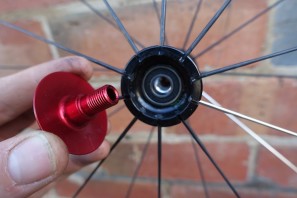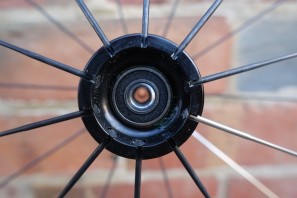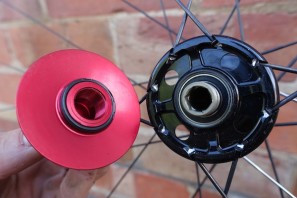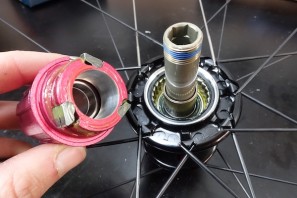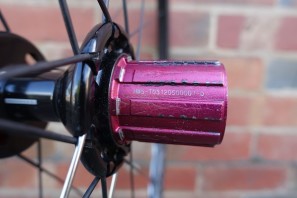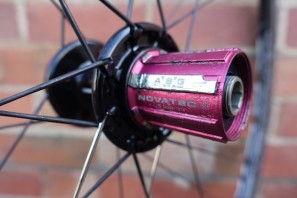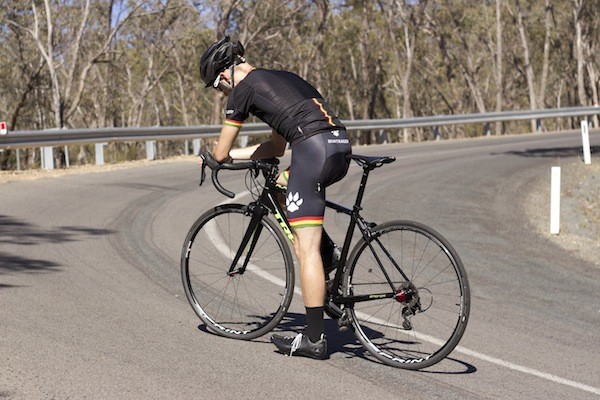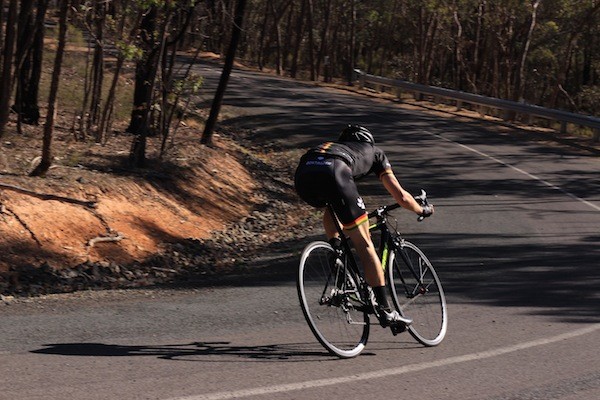I’m sure you’ve heard it many times before, so I’ll apologize, because you’re going to hear it again. Without doubt, wheels are one of the best areas on your bike to upgrade. Any experienced cyclist will tell you that if you’ve got dollars burning a hole in your pocket, there is no better component on your bike to throw money at than a new set of hoops.
Providing you get the right option, a lighter, stiffer, or more aerodynamic wheelset can transform the overall ride quality of your bike. When you ride, your wheels are constantly rotating. Compared to a static item on your bike such as a handlebar or brake calliper, a wheelset comprises a rotating mass that needs to be accelerated and decelerated thousands of times on every ride. Therefore, even a relatively small drop in weight from your tyre or rim can result in a noticeable change to your bike’s ability to pickup speed.
Of course aerodynamics and stiffness are important too, because wheels are the direct link between your pedals, handlebar and the road. Even the most high-end race bikes on the market will ride like a bag of bones if they’re fitted with a heavy and floppy wheelset. The good news though? Upgrading the wheelset on an entry-level road bike can inject a serious dose of performance that you’ll immediately feel out on the road.
Do the Novatec Sprint wheels tick the upgrade box? Read on for our review!
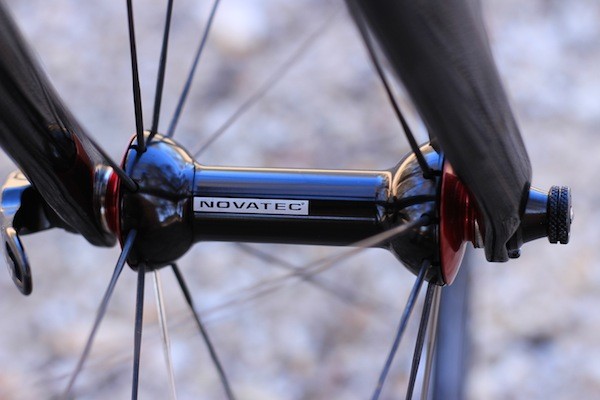
Looking to tap into the wheelset upgrade market, Taiwanese brand Novatec offer a complete line of road and mountain bike wheels that are designed to deliver high performance, without a high sticker price. As the performance arm of Joytech, the Novatec name is typically best known for its enormous range of bicycle hubs, and they also manufacture hubs under license for many other big-name wheel brands. In the last 6-7 years however, they’ve been making a concerted push with their complete wheelset lineup too.
The Sprint wheelset is Novatec’s lightest alloy road wheelset. At a claimed weight of just 1355 grams, they’re targeted towards criterium racers and hill climbers. With stainless steel spokes, sealed cartridge bearings, alloy rims and a machined braking surface, Novatec claim that the Sprint wheels provide “race readiness and workhorse reliability”.
With an MSRP of $769 USD and $799 AUD, the Novatec Sprint wheels are certainly appealing on paper. But what are they like to ride in the real world?
Initial Impressions
Out of the box, the Sprints certainly look lightweight. The diminutive front hub, skinny stainless steel spokes and shallow rims leave a lot of negative space within the tyre line, which I’ll admit is a nice change from the deep-section carbon rims I’ve been testing lately. I think it’s the more ‘classic’ look that I dig.
The Sprints feature rims built from Novatec’s proprietary alloy blend, which we’re told is similar to a 6069 alloy. They have a sleeved joint and a machined braking surface that works with regular brake pads. At 23.4mm tall, the tubeless compatible rims don’t have a particularly deep profile, but the emphasis here is on a light system weight versus outright aerodynamics. Novatec have other wheels for that.
The wheels themselves are handbuilt in Novatec’s Taiwan facility, with only the initial tensioning process being carried out by a machine. Everything else is done by hand.
Pillar stainless steel double-butted spokes are used all round, with 20 spokes laced radially on the front, and 24 used on the rear with 1x lacing for the non-drive side, and a 2x lacing pattern for the drive side. Novatec spec 14mm alloy nipples on the Sprint wheelset, with two red nipples tying down the silver spokes that straddle the valve hole on each wheel.
At the centre of the wheels you’ll find Novatec’s high-end road hubset. These feature lightweight alloy hub shells, 7075-T6 axles, Japanese sealed cartridge bearings and a 3-pawl freehub mechanism. With just 2 x 5mm hex keys, the hubs can be pulled apart for freehub maintenance and to check bearing condition. For longterm serviceability, every component inside the hub is replaceable.
Aesthetically, the Sprint wheels look slick with their black micro peened surface finish. However, comments were split on the red anodized highlights on the hub end caps. I quite like them, but there will be bikes out there that won’t suit the colour scheme. Minimalist quick release skewers are included in the box, but annoyingly, the logos are upside-down if you want to run your skewers facing backwards.
Our test wheelset came out to 1396 grams on the scales, which included the supplied tubeless tape and valves. The tape was pre-installed, but depending on the Novatec distributor in your country, the Sprint wheels may or may not come with the tubeless kit. In the case that they don’t, you can easily sub in Stan’s Yellow tubeless tape and universal valves.
The wheels were setup predominantly with a pair of Schwalbe One Tubeless tyres, and I experienced nothing but faultless performance. The tyres did require a blast from a compressor to get them to seat initially, but once the bead ‘snapped’ into place, the tyres stayed put for the entire test period. We also tested the wheels with a pair of 28c Bontrager AW3 tyres, and a pair of 25c Continental GP 4000 tyres. Both of these were standard clincher-types with inner tubes.
If you’re looking for further details and the full spec rundown on the Novatec Sprint wheels, be sure to check out our comprehensive First Look article.
Setup
Over the past 6 months, the Novatec Sprint wheels have been ridden under various testers on a variety of different bikes. From daily service on a commuter bike through the winter rain, to high-intensity criterium racing, through to dancing around all-day long in the mountains, the Sprint wheels have seen a lot of miles. And while I didn’t tell Novatec, I did pass the wheels onto a test rider who came in well over the 80kg weight limit. I wanted to see how the lightweight wheels would fare outside of their design intentions, and to uncover any potential flex or durability issues. But more on that later…
For their first hit-out, the Sprint test wheels were bolted onto my personal Trek Emonda ALR 5. After the successful launch of the carbon version in 2014, the alloy Emonda was released earlier this year, and it’s built around a 1050-gram alloy frame and a 360-gram full carbon fork. The Emonda ALR 5 retails for $2199 in Australia ($1679 in the US), putting it smack-bang in the middle of the range with a full Shimano 105 groupset. As a complete bike, it’s terrific value, but it’s also a great example of a bike that can benefit from a potential wheel upgrade. It’s really the only area on the Emonda ALR 5 that I feel is lacking behind the rest of the build kit.
While I was expecting a decent weight drop, fitting the Sprint wheelset lobbed off over 600 grams from the stock Bontrager alloy road wheels – a staggering 30% weight reduction! With the lighter wheels installed, the bike was immediately transformed into a lighter, sharper and faster machine.
From the very first pedal stroke, it was clear that this wasn’t just a lightweight set of wheels, but a smooth-riding one too. This was particularly noticeable with the 25c tubeless Schwalbe tyres installed, which I was able to run at 75psi for beautifully supple feel on the road. Of course tyre pressure is entirely dependent on conditions and rider weight, but I have found I can drop 10-15psi comfortably with the tubeless setup. Many of the sealed backcountry roads surrounding my hometown of Bendigo are made up of coarse bitumen, so being able to smooth out the ride is highly important for reducing body fatigue on longer rides.
Having run tubeless on my last two road bikes, I can happily recommend it. Providing you have a nice and tight fit between a tubeless-ready tyre and a matching tubeless-ready rim, the system delivers airtight security and the ability to run lower pressures for a smoother ride and more cornering grip. With 50ml of liquid sealant inside the tyres, small pinhole punctures can be sealed up while you’re riding. Bigger cuts will still require a new inner tube and a tyre boot to get you home, and it’s in this scenario where road tubeless gets messy and frustrating. The initially tight fit makes them a pain in the arse to remove and install, and in the case of the Novatec wheels, you’ll need to be careful not to damage the rim tape with tyre levers. Once you’ve had them on the wheels for a while though, they do stretch, and it makes removal a little easier. That all said and done, in over 6 months of testing, I am yet to have any issues at all. That’s compared with my regular tube-type road wheelset, which probably suffers a puncture about once a month on average.
(Note: If you’re looking to learn more about road tubeless, make sure you check out Part One & Part Two of our online articles on the topic.)
On the road
Acceleration from the Sprint wheels is swift, and minimal effort is required to get them up to speed. Under hard accelerating efforts, they are impressively responsive. Maybe not quite as responsive as some of the stiffer wheels out there, but they’re still damn good. The light overall weight definitely helps during the rapid speed changes you might encounter on a tight criterium course or while battling toe-to-toe on a hill climb.
Handling is also excellent, and after removing the heavy stock wheels, I found the steering to be much more direct overall. Carving corners becomes just that little bit easier, with less chance of understeering and taking corners too wide. Braking is strong and predictable with the machined alloy surface, which gave me more confidence when dumping the bike deep into downhill turns.
On the climbs, the Sprints proved to be a lively set of wheels, and they seem to enjoy being thrown about when you’re reefing the bars side-to-side. Their light overall weight helps to inject a good deal of zip into the bike, and they egg you on to click down a couple of gears and launch out of the saddle. Every time a fellow rider pushed past me, I just couldn’t help myself.
With their quality build and well-balanced spoke tensions, the Sprint wheels are plenty stiff laterally, which contributes to their whippy feel on the climbs. And despite our best efforts to mash them during flat-out sprint sessions, none of our testers could achieve any discernible brake rub from the lightweight alloy rims. Our larger test rider did detect a small amount of flex through the front hub when pushing hard, though to be honest, it never presented an actual problem in the real world.
Certainly compared with some deep-section rims out there, the Sprints aren’t quite as rigid. The flipside of this however, is that there is a little more damping to the ride quality. It’s part of the reason why they feel smooth out on the road, and not bone-jarringly stiff like some of their competitors. Of course there is such a thing as having a wheel that’s too stiff, and a little bit of compliance can go a long way. For their intended purpose, Novatec seem to have gotten the balance right with the Sprints.
As you would expect from a hub specialist, the bearings continue to spin beautifully smooth after 6 months of all-weather punishment. Exacting tolerances and good sealing helps here. When the bearings do eventually show signs of wear, they’re relatively cheap and easy to replace.
There are 27 engagement points inside the freehub, which clicks along at a medium frequency and volume. As a comparison, it sounds very similar to a Zipp freehub. Higher engagement is typically more important for mountain bike wheels, but criterium racers and cyclocrossers may wish for faster pickup. With exactly that in mind, Novatec is currently working on a 6-pawl freehub mechanism that will double the engagement points, with only a slight increase in coasting drag.
Durability
I’m afraid I’m going to have to be boring here, because during our time with the Sprint wheels, we experienced zero durability issues. There have been no broken spokes, no buckles to the rim, and not a skerrick of popping or creaking from the freehub. Just yesterday I pulled the hubs apart to check out the internals, but it appeared unnecessary, as everything was as clean and slick as it was when I first received the wheels.
After removing the cassette, I did notice a very slight amount of digging into the alloy splines on the freehub body, but far less than what some other wheels would show after the same amount of kms. In fact, the cassette slid off cleanly, without the need to pry it off with a screwdriver. This is thanks to the stainless steel Anti Bite Guard (A.B.G), which offers better support to individual cassette sprockets. The design is similar to what’s found on American Classic wheels, and it’s reassuring insurance against potential damage to the freehub body.
One point to note is that with the round straight-pull spokes, they are a little trickier to true than a regular J-Bend or bladed spoke. Ideally, you’ll need to use a special tool to hold onto the spoke while turning the nipples, so that the spoke doesn’t also turn on its own. That said, there seems to be enough friction between the spoke head and the corresponding pocket on the Sprint’s hubs that we didn’t need a special tool.
The Competition
As it stands, there are a lot of different wheel options on the market. Just as with bikes, wheels are becoming even more use-specific, so it’s important to take into account your own personal requirements when looking for a new set of hoops. Are you racing? How long do your rides typically last? Is your riding split 50/50 between the hills and the flats? Could you benefit from a tubeless setup? Is aerodynamics your primary concern?
While I’d love to compare the Sprint wheels to everything else on the market, there are 3 options from well-known companies that are worth pointing out. These wheels are also designed to offer tubeless performance, a low overall weight, and day-in-day-out reliability:
- American Classic Sprint 350: Using a very similar name, these lightweight alloy hoops are also similar on specs and price. They do have a higher spoke count though (28/32), and they use standard J-Bend spokes. They’re also a shade wider, with a 19.7mm internal rim width, and they have a higher 100kg rider weight limit. Retail pricing is $899 USD and $869 AUD.
- Shimano Dura-Ace 9000 C24: A well-known and much-loved wheelset from the Japanese giant. These use a carbon/alloy hybrid rim construction that offers a little more strength and stiffness, with a higher rider weight limit of 110kg. The tubeless version uses a solid outer rim bed, so no tape is required for tubeless setup. However, it does mean the C24’s use a proprietary spoke and nipple system. Claimed weight is 1469 grams and they retail for $1199 USD and $1895 AUD.
- HED Ardennes SL PLUS: With a modern rim design that measures 20.7mm wide internally, the Ardennes PLUS are also tubeless compatible. They use a high-end build with Sapim CX-Ray spokes and HED’s own hubs, but they do come in heavier, at a claimed weight of 1502 grams. The sticker price is also higher at $1200 USD and $1885 AUD.
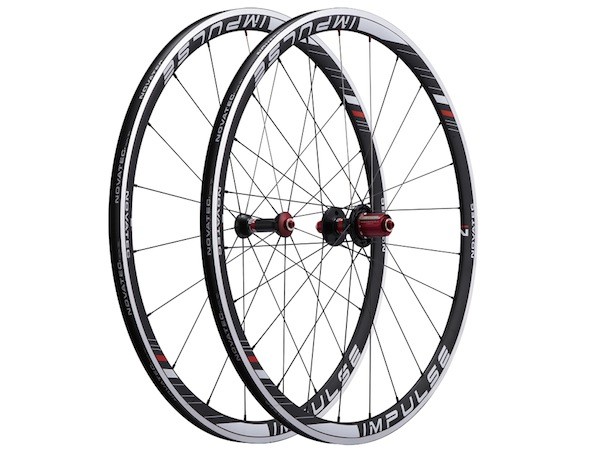
It’s also worth drawing attention to some of the other models within Novatec’s own wheel line. The Impulse wheelset shares the same hubs and spokes as the Sprint wheelset, but swaps in a 32mm deep alloy rim that offers greater stiffness and aerodynamics. The Impulse wheelset retails for the same price, it’s also tubeless compatible, and it doesn’t have a recommended weight limit. For the extra strength and aerodynamics, you’ll add 140 grams over the Sprint wheelset.
You can go even lighter with Novatec’s “R” series carbon wheels. The R1 is the carbon-equivalent of the Sprint wheelset, with the same hubs and spokes being laced into a 24mm deep carbon fibre rim. Weight drops down to a very light 1245 grams, while the price bumps up to $1899 USD. While the R1 wheelset is available in a tubular version (as are many of Novatec’s road wheels), the clincher is not tubeless compatible.
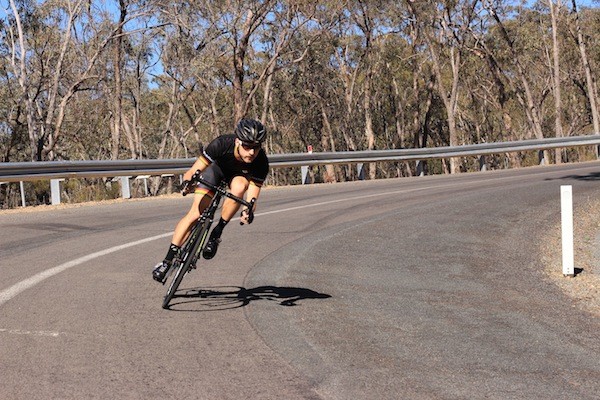
The Verdict
After spending a solid 6 months aboard the Novatec Sprint wheels, all of our testers came away thoroughly satisfied with their on-road performance. As it stands, the Sprint wheelset is impressively light, and impressively smooth for the dollars. They’re well built, they’re simple to setup tubeless, and in our collective experience, they have proved to be sufficiently durable enough for me to recommend them as a great everyday lightweight wheelset.
If you’ve got the coin to splash, you can certainly get lighter, and you can get wider too. You can also get deeper, but if you’re chasing aerodynamics, then these wheels won’t be for you. It should already be obvious, but if you’re over the 80kg weight limit, then these wheels also aren’t for you. My personal recommendation would be to check out the Novatec Impulse wheelset if you fit in the above category.
Novatec’s stated goal is “to provide high quality, high performance, and high value cycling components”. In that regard, the Sprint wheelset certainly deliver on their claims. They’re a great quality and lightweight option for those that don’t want to spend the earth on new wheels. And if you’ve got an entry/mid-level road bike, consider these guys when you’re putting together your list for potential upgrades.
Do you have any other wheel recommendations to add? Why don’t you leave them in the comments section below? Otherwise, hit up the below links for more information on the Novatec range;
USA: www.novatecusa.net
Australia: www.bicyclepartswholesale.com.au
